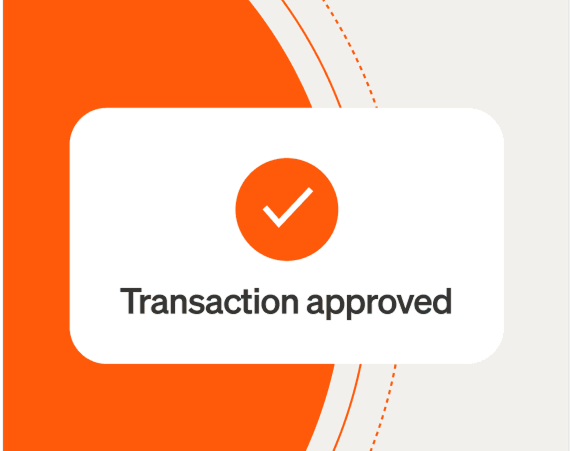Every dollar of aid is a promise. A promise that help is coming. That someone sees your need. That this time, the system will work for you instead of against you. Every payment we send carries the weight of that promise, and I think about that weight constantly.
Because here's what I've learned: the distance between approval and payment is where trust either breaks or builds. You can have the fastest application system in the world, the most sophisticated fraud prevention, the most compassionate customer support—but if payment doesn't arrive when it's supposed to, if it's complicated to access, if it fails for technical reasons nobody explains, you've broken the fundamental promise at the heart of benefit delivery.
I've seen what happens when payments fail. Not fail in the sense that they never arrive, but fail in ways that compound crisis instead of resolving it. The rental assistance approved but sent as a check that takes two weeks to mail, arrives the day after eviction. The childcare subsidy deposited to an account the recipient doesn't have access to anymore. The emergency cash delivered through a process so complicated that getting the money becomes its own crisis.
Every one of these scenarios represents infrastructure that prioritized administrative convenience over human need. Systems designed for the paying entity's ease rather than the recipient's reality. Processes that work fine on paper but break down in the messy complexity of actual lives.
We built something different. Not just a payment system, but payment infrastructure designed around a simple principle: the moment money reaches someone is a moment of trust. We built systems worthy of that trust.
The Promise Behind Every Payment
When someone applies for support through a program we power, they're usually in crisis. Rent is overdue. Childcare has lapsed. Food has run out. The emergency isn't theoretical; it's immediate and getting worse every day they wait. And then comes the question that determines everything: when will I actually get the money?
In traditional systems, the answer is vague and unsatisfying. "You'll receive payment within 7-10 business days." "A check will be mailed to you." "Funds will be deposited to your account." No specificity. No tracking. No way to know if the payment is actually coming or if something went wrong.
This uncertainty compounds crisis. If you don't know when rent assistance is arriving, how do you negotiate with your landlord? If childcare subsidy timing is unclear, how do you commit to work schedules? If emergency cash might come tomorrow or next week, how do you plan for the days in between?
Our payment infrastructure eliminates that uncertainty. When someone gets approved, they know exactly how they'll receive payment, when it will arrive, and how to access it. They can track their payment in real time. They have a human they can call if something goes wrong. The promise isn't vague; it's specific, trackable, and backed by infrastructure built to keep it.
Infrastructure That Meets People Where They Are
I've learned that there's no one-size-fits-all payment method. Different people need different things, and good infrastructure adapts to human reality rather than forcing everyone into the same channel.
Some recipients need instant access—they're facing eviction tomorrow, not next week. For them, we issue prepaid cards that activate immediately, funds available within minutes of approval. Physical or digital, branded to the program, ready to use wherever cards are accepted.
Some need traditional banking—direct deposit to their existing account, the kind of payment that doesn't require learning a new system or activating a new card. We handle ACH transfers with complete control over timing, transparent tracking of when funds are submitted and available, and automatic correlation of any returns so issues get resolved immediately.
Some need the reliability of checks—landlords who only accept physical payment, programs with compliance requirements around paper trails, recipients who don't have bank accounts or prefer tangible payment. We print checks at secure facilities, track them through their entire lifecycle from mailing to deposit, and provide real-time updates at every step.
Some need the instant reach of digital wallets—PayPal for people who live their financial lives through apps, who need to send money to family or pay bills online. We send payments that arrive instantly, no waiting for cards to ship or checks to clear.
Every payment method works at every scale. Send one payment or orchestrate 100,000 simultaneously. Issue $1 or $8 million. The infrastructure adapts because human need doesn't come in standard sizes, and our systems shouldn't force it to.
The Complexity We Handle So Programs Don't Have To
Behind every simple payment experience is extraordinary complexity. When we say someone receives their rental assistance in minutes, here's what's actually happening:
The payment is originated through our system with precise compliance with federal banking regulations. Funds are moved from program accounts with complete audit trails and reconciliation. The recipient's identity is verified to prevent fraud while respecting privacy. The payment method is optimized for their situation—instant card for someone in crisis, direct deposit for someone with stable banking, check for someone whose landlord requires it.
If it's a card, we're managing card issuing through partnerships with major processors, setting appropriate spend controls based on program requirements, enabling features like Apple Pay and Google Pay for digital convenience, and tracking authorization requests in real time. We're shipping physical cards through global fulfillment providers when needed, with branded carriers and high-quality graphics that respect the program's identity.
If it's direct deposit, we're originating ACH credits through the federal system, managing timing to ensure funds are available when recipients need them, handling returns automatically if account information is wrong, and maintaining transparent visibility into exactly when transfers are submitted and settled.
If it's a check, we're printing at industrial facilities through our partner payment facilitators with security measures that prevent fraud, mailing via USPS First Class or FedEx Overnight depending on urgency, tracking through the entire lifecycle including when it's delivered and deposited, and providing positive pay systems that deny unauthorized checks.
All of this complexity is invisible to recipients. They just know: I was approved, and my payment arrived exactly when I was told it would, in a format I can actually use.
Recurring Payments: Infrastructure for Ongoing Support
Some of the most important benefit programs aren't one-time payments. They're ongoing support—monthly childcare stipends, recurring rental assistance, sustained cash transfers that help families achieve stability rather than just surviving emergencies.
Recurring payments present their own infrastructure challenges. How do you automate distribution while maintaining oversight? How do you handle eligibility changes midstream? How do you ensure cards don't decline because someone forgot to reload them? How do you track impact over time rather than just measuring one-time distributions?
We built a recurring payments toolkit specifically for these programs. Set sophisticated reloading schedules that adapt to program requirements—predictable monthly assistance, variable emergency top-ups, graduated support that changes as families stabilize. Funds flow exactly when recipients need them, reducing administrative overhead while ensuring consistent support delivery.
For housing programs, we created purpose-built infrastructure: rental assistance toolkits that issue cards with automatic utility-focused restrictions, where funds load seamlessly for rent and essential services while maintaining program integrity. Recipients get help paying for what they need. Landlords get reliable payment. Program administrators maintain complete oversight without micromanaging every transaction.
This is what infrastructure for care looks like: systems sophisticated enough to handle complex recurring support while remaining simple for everyone using them.
The Human Layer: Support Behind Every Payment
But here's what separates our payment infrastructure from pure automation: every payment comes with human support. Real people who understand your program, know how payments work, and can solve problems when they arise.
Recipients can call when their card isn't working. Landlords can get help understanding how to accept payment. Vendors can verify funds before providing services. Case managers can track payment status for their clients. Government partners can get immediate answers about disbursement timing.
No chatbots. No endless phone trees. No "allow 3-5 business days for a response." Just direct access to our support team, available via phone, text, and email, in over 50 languages, ready to solve problems in real time.
This matters because payments fail in ways that technology alone can't predict or fix. A card gets declined because the merchant's system is misconfigured. A direct deposit bounces because the bank's information changed. A check gets lost in the mail. A digital wallet payment gets held for fraud review.
Each of these situations requires human judgment, advocacy, and problem-solving. Our team doesn't just explain what went wrong. They fix it. They work with banks to resolve holds. They reissue cards when needed. They track down missing payments. They ensure that technical failures don't become broken promises.
We've processed millions in payments across hundreds of thousands of transactions. The reason these payments reached their intended recipients without becoming new crises is because human support backed every one.
Visibility: Knowing What's Actually Happening
Traditional payment systems are black boxes. You initiate payment, then wait to hear if it arrived. Maybe you get confirmation eventually. Maybe recipients call to say something went wrong. Maybe you discover payment failures weeks later during reconciliation.
Our infrastructure provides complete visibility. Program administrators see every payment from initiation through completion. Live dashboards show program impact as it happens—how many payments processed and how much left do we have to do.
Track individual payments or analyze aggregate patterns. See exactly where each recipient stands in their payment journey from enrollment through completion. Set custom alerts that notify you when critical events occur—a payment fails, a card is declined repeatedly, a recurring load doesn't process as scheduled.
For checks, we provide unprecedented visibility into a payment method that traditionally offers none. Know exactly when checks have been mailed, when they arrive, the precise moment they're deposited. Access detailed information including deposit timestamps, check images, auxiliary metadata, serial numbers, and legible rejection reasons if a check is returned.
This visibility creates accountability. Not the punitive kind, but the kind that enables excellent program management. You can identify issues before they become crises. Answer questions with specificity instead of vagueness. Demonstrate to funders and oversight bodies exactly how resources are being used. Adjust strategies based on real-time data rather than after-the-fact reports.
Scale Without Losing Humanity
One of the questions I get most often: how do you maintain payment reliability at scale? How do you handle everything from small pilot programs to statewide distributions without systems breaking down?
The answer is infrastructure built for scale from the beginning. We can process one payment or 100,000 simultaneously. Deploy new payment programs instantly—whether you're expanding into new markets, spinning up emergency assistance, or segregating funding sources across multiple initiatives, your payments go live as soon as your program is ready.
Bulk imports let you upload CSVs to handle thousands of actions at once—from creating cardholders to initiating payments to managing program changes. Automated workflows set if-this-then-that conditions for smart handling of complex scenarios. Granular spend controls and custom user permissions mean large teams can manage programs without losing security or oversight.
But scale doesn't mean automation that loses sight of humans. Every payment, whether it's the first one or the millionth, carries the same promise. Whether we're sending $200 childcare stipends or distributing an $8 million housing fund, every dollar moves with the same care, tracking, and human support.
This is what I mean by delivering dignity at scale. The infrastructure that lets us process millions in payments is the same infrastructure that ensures each individual payment arrives as promised, in a format recipients can use, backed by humans who can help if anything goes wrong.
The Justice Dimension: Who Gets Paid How
There's a justice issue embedded in payment method choices that we don't talk about enough. Traditional systems often default to direct deposit because it's cheapest and easiest for the paying entity. But this choice systematically disadvantages people without stable banking relationships.
If you're unbanked or underbanked—as millions of individuals are, disproportionately from marginalized communities—direct deposit isn't accessible. You end up waiting for checks, paying check-cashing fees, or navigating complicated processes to set up accounts you might not want or trust.
Our infrastructure removes this barrier by supporting genuine choice. Recipients can select the payment method that works for their lives: instant cards if they need immediate access, direct deposit if they have stable banking, checks if that's what works, digital wallets if that's how they manage money. The program doesn't force everyone into the same channel because we understand that payment accessibility is part of equity.
Similarly, our rental assistance toolkit addresses a specific justice issue: housing instability often means complex payment arrangements between tenants, landlords, and utility companies. By issuing cards with purpose-built restrictions and automatic utility support, we enable direct payment to housing providers while ensuring funds are used appropriately. This protects both recipients and programs while facilitating stable housing.
These aren't just technical choices. They're decisions about who can access support and how difficult we make it. Good payment infrastructure removes barriers rather than creating them, adapts to human reality rather than forcing humans to adapt, and treats payment accessibility as a prerequisite for equity.
What This Infrastructure Enables
When payment infrastructure actually works—when it's fast, reliable, flexible, and human-supported—it transforms what programs can accomplish.
Programs can move from one-time emergency response to sustained support. They can serve populations that traditional systems exclude. They can respond to crises at the speed crisis actually moves. They can demonstrate accountability to funders and oversight bodies with comprehensive data. They can scale without proportionally scaling administrative burden.
But beyond individual programs, reliable payment infrastructure changes what's possible for the social safety net itself. It proves that support can be delivered with the speed and reliability people expect from every other aspect of modern life. It demonstrates that scale and dignity aren't opposing values. It shows that the distance between policy and payment can be measured in minutes instead of weeks.
What We're Building Toward
As Unify expands to power programs across more states and serve more communities, our payment infrastructure becomes more sophisticated. We're adding payment methods, improving tracking, reducing friction, expanding support.
But the core commitment remains: every dollar of aid is a promise, and we built infrastructure to keep that promise. Not sometimes. Not for programs we happen to prioritize. Every payment, every time, to every person who's been approved for support.
This means continued investment in technology that moves money reliably at scale. In partnerships with banks, processors, and payment networks that expand our capabilities. In human support that ensures technical excellence translates to actual people getting help. In visibility tools that create accountability without creating administrative burden.
It means treating payment infrastructure not as a back-office function but as central to mission delivery. Because the most elegant application system, the most sophisticated fraud prevention, the most compassionate support—none of it matters if payment doesn't arrive as promised.
The Promise We Keep
I started by talking about trust. About how the moment money reaches someone is a moment where trust either breaks or builds. About how every payment carries the weight of a promise: that help is coming, that someone sees your need, that this time the system will work.
Unify's payment infrastructure is built to keep that promise. Not as aspiration, but as operational reality backed by technology, human support, and genuine commitment to treating every payment as what it is: a lifeline for someone in crisis, a bridge to stability, a demonstration that when we commit to caring for each other, we have the tools to make that care real.
We've moved nearly $300 million to communities through payment infrastructure designed for speed, dignity, and reliability. We've supported over one million people with payments that arrived when promised, in formats they could use, backed by humans who could help. We've proven that payment infrastructure can be both sophisticated enough for institutional accountability and simple enough for individual accessibility.
But more than anything, we've kept promises. When someone was approved for rental assistance, the payment arrived before eviction. When a parent needed childcare subsidy to return to work, the recurring payments started on time. When a family faced emergency need, the cash came through fast enough to actually help.
Every one of those kept promises builds trust. Trust in specific programs. Trust in organizations delivering support. Trust in the possibility that systems can work for people instead of against them. Trust that asking for help might actually result in receiving it.
This is what payment infrastructure means when it's built right. Not just moving money, but keeping promises. Not just processing transactions, but delivering dignity. Not just technical excellence, but human care at scale.
We built the infrastructure to keep every promise we make. Because every dollar matters. Every payment represents someone's whole world. And every moment we deliver as promised is a moment we prove that care and scale, speed and dignity, institutional accountability and human accessibility—these aren't trade-offs. They're just good infrastructure.
Infrastructure worthy of the trust people place in us when they apply for help. Infrastructure that honors the promise behind every payment. Infrastructure that transforms what's possible when we decide that delivering care matters as much as promising it.
This is Unify's commitment: that behind every payment is infrastructure built to keep the promise that payment represents. That every dollar moves with care, visibility, and human support. That the distance between approval and payment is measured in minutes, not weeks. That when we say help is coming, it actually arrives.
Because in the end, a promise kept isn't just a payment delivered. It's trust rebuilt. It's dignity honored. It's proof that when we build infrastructure worthy of our commitments, care can move as fast as need demands it.
Every dollar is a promise. We built the infrastructure to keep it.
Your commitment is to people. Ours is to building the systems that help you reach them. Let's get started together







